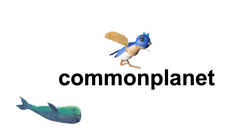If you’ve ever heard of the Arctic fox, you’re probably familiar with its iconic white coat that blends perfectly with its snowy landscape. But if you were to look for such a fox in summer, you would be quite out of luck. This is because, like a chameleon, this fox changes the color of its fur to brown or gray during these warm months. This ability is an example of phenotypic plasticity. Phenotypic plasticity refers to the ability of an organism to alter its physical traits and behaviors in response to external stimuli like a changing of seasons. It works by expressing specific genes depending on the conditions met.
This adaptability is crucial for survival as it helps organisms respond dynamically to changes around them. Returning to the arctic fox, seasonal coats help it remain camouflaged and protected from predation, as a white coat would stick out in the summer like a brown coat in snow. This type of dynamic adaptability directly contributes to the fox’s survival and fitness. Such phenomena can be observed in all walks of life throughout the animal kingdom. Tadpoles of certain frogs will grow out their tails when exposed to predators to help them swim faster. Others who haven’t seen predation occur often will conserve energy and keep their tails relatively short. This maximizes energy use in a need-based manner and consequently significantly heightens the species’ fitness.
Phenotypic plasticity directly boosts the resilience of organisms. It enables animals to thrive under many differing conditions, thus considerably boosting their survivability. Next time you see these animals, whether they be an arctic fox sporting its snowy sheen or a tadpole racing through the water, remember that these incredible changes are thanks to phenotypic plasticity. This powerful biological tool is essential for creating the dynamic and ever-changing tapestry of life we see in the natural world.
Daniel Kim (June 2024)

